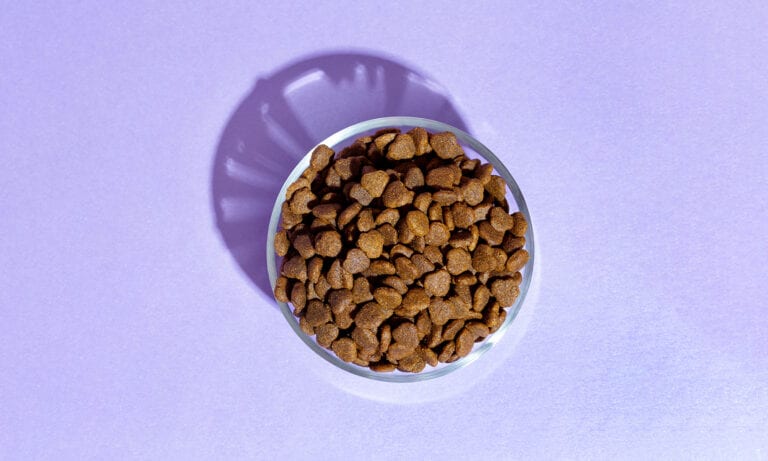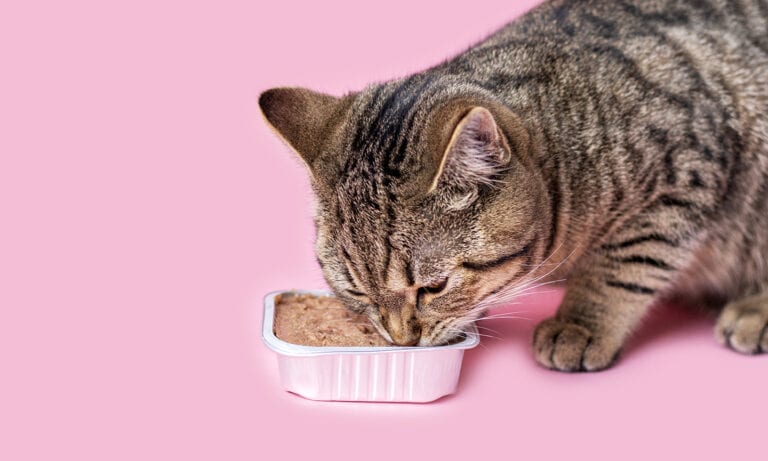“You’re being bamboozled by a cat.”
That’s what the receptionist at the vet’s office told me as I struggled to hoist a heavy case of canned prescription cat food onto the counter. I had explained that I needed to return it because my Himalayan, The Fluffy Cat, refused to eat it.
The Fluffy Cat had devoured the last case of food, recently prescribed to him to help manage his urinary health, but he refused to touch food from the new cans.
He’s normally a voracious eater, so I worried the food might be tainted. Plus, from my time spent on staff at Cat Fancy magazine, I knew that even small changes in a cat’s behavior can indicate a big problem, so I chose to err on the side of caution and return the food.
The Fluffy Cat chowed down on the first can in the replacement case like nothing ever happened. But the receptionist’s remark lingered in my ear. Was something really wrong with his food, or was my cat a finicky trickster?
To learn more about the reasons cats refuse to eat and what to do about it, I reached out to Ariel Mosenco, DVM, DACVIM, a staff veterinarian at Ryan Hospital at the University of Pennsylvania School of Veterinary Medicine.
How Much Food Should An Average Cat Eat?
“Just like people, the amount of food each cat needs will vary based on the individual,” Mosenco told me. “The feeding recommendations on pet food packing should only be used as a general guideline.”
Speak with your veterinarian to establish a healthy feeding schedule at each stage of your cat’s life — kitten, adult and senior. Your vet will likely use a tool such as World Small Animal Veterinary Association’s nutrition toolkit and Feline Body Condition Score chart to determine a nutrition plan for your cat.
How To Recognize If A Cat Isn’t Eating
In a single-cat household with no other pets, this is a no brainer — just make sure to feed the same amount of food each day and take note if more food is left in the cat food bowl than usual.
“A multicat household is where we can get into trouble,” Mosenco says, noting that if one cat isn’t eating, the other cats in the house will normally pick up the slack, making it tough to discern who’s eating how much. If you suspect that a cat might not be eating a fair share of food, Mosenco recommends feeding each cat separately and measuring the amount of food individually.
Watch for changes in your cat’s weight, muscle mass and energy level. Lethargy and weight loss are signs that your cat has stopped eating — or has become “anorexic” in veterinary terms.
On the flipside, “A cat may still look fat, but if he is not eating, and thus not taking in any energy from food, his body will begin to digest its own muscle,” Mosenco explains. “If you see a cat starting to lose muscle mass, it’s an indicator that something is wrong.”
Why Won’t My Cat Eat?
If you cat isn’t eating, it could be a sign that something major is amiss.
“Lack of appetite is a symptom of all major diseases in cats, including serious conditions like kidney disease,” Mosenco says. “When your cat stops eating, be very wary.”
Sometimes, the issue is a recent change in your cat’s environment or food.
“Cats are very particular about the type of food they want to eat and the way it is presented,” Mosenco says. Even the introduction of a new food dish or a change from dry to wet food can upset a cat. “Keep food fresh and don’t place your cat’s food in an area that’s dirty or smelly.”
It’s also important to introduce a new food gradually, because an abrupt change in food can cause inappetance. Even environmental factors, such as unfamiliar guests in the house or construction noise, can interfere with a cat’s eating habits.
When To Call The Vet
Call the vet as soon as you notice your cat has stopped eating.
“A cat’s body can enter starvation mode in as little as a couple of days,” Mosenco says. “It’s highly recommended to take your cat to the vet right away.”
Don’t Force Feed
Never attempt to force feed a cat, Mosenco cautions.
“Force feeding can cause a cat to develop an aversion to food — meaning your cat won’t eat for some time because it will associate food with a negative experience.”
However, a vet may introduce a feeding tube if necessary to sustain your cat. Just don’t try this at home.
Better Safe Than Sorry
After speaking to Mosenco, I feel like I made the right choice in returning my cat’s food and having a conversation with my veterinarian when The Fluffy Cat wouldn’t eat. I would much rather be labeled a paranoid pet owner by the office staff than put my cat’s health at risk.
So why did old Fluffster refuse to eat? The jury’s still out, but the vet gave him a clean bill of health, and it’s highly unlikely that the food was tainted.
My theory is that the environmental and food changes he experienced in a short period of time were enough to push him over the edge into sassy town. The introduction of wet food, accompanied by a new dish, was a big adjustment. And then I had the nerve to switch it up with an entirely new case of food (albeit the exact same formula) that tasted ever-so-slightly differently. It was, apparently, the straw that broke the kitty camel’s back.
Now, when The Fluffy Cat turns up his nose at the first can of food in a new case, which happens every few months, I sit patiently on the floor and offer him a bite of the food on a fork. He usually takes the bait, then starts nibbling on the food in his dish.
If the fork trick doesn’t work, I gently dab a tiny glob of food onto the corner of his mouth with my finger. He can’t resist licking it, and thereby discovering that (shocker!) it’s not made of poison.
He seems to just need reassurance that the food is safe. For me, his behavior serves as a good reminder that change can be scary for all of us, especially cats. But sometimes a little love (combined with a veterinary exam to rule out any health issues) can make everything OK.
By: Robin Rockey
Share:









